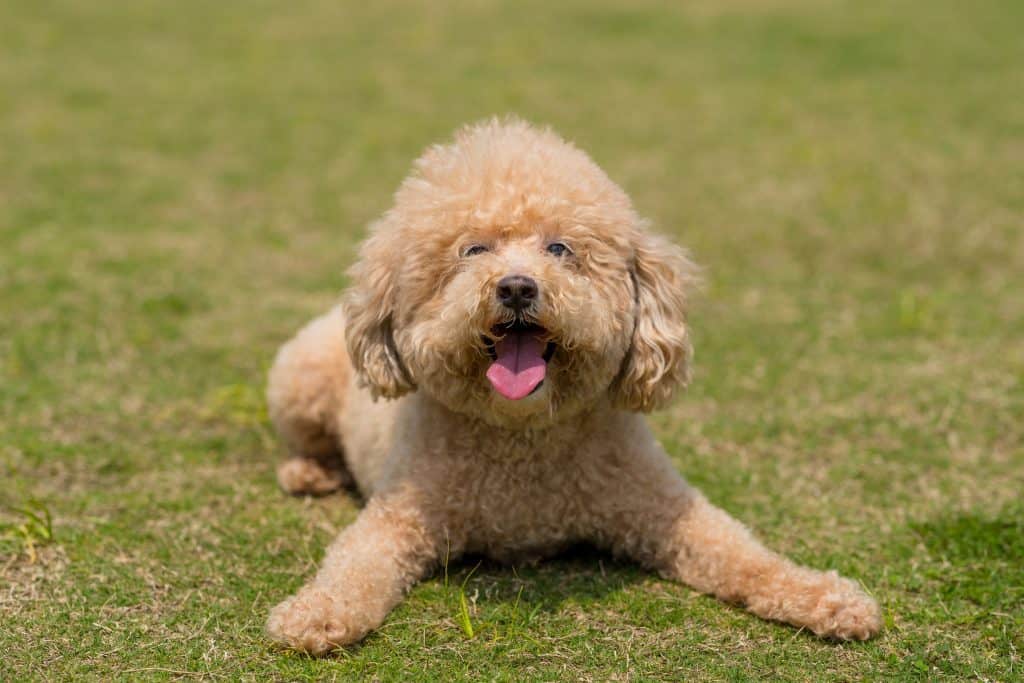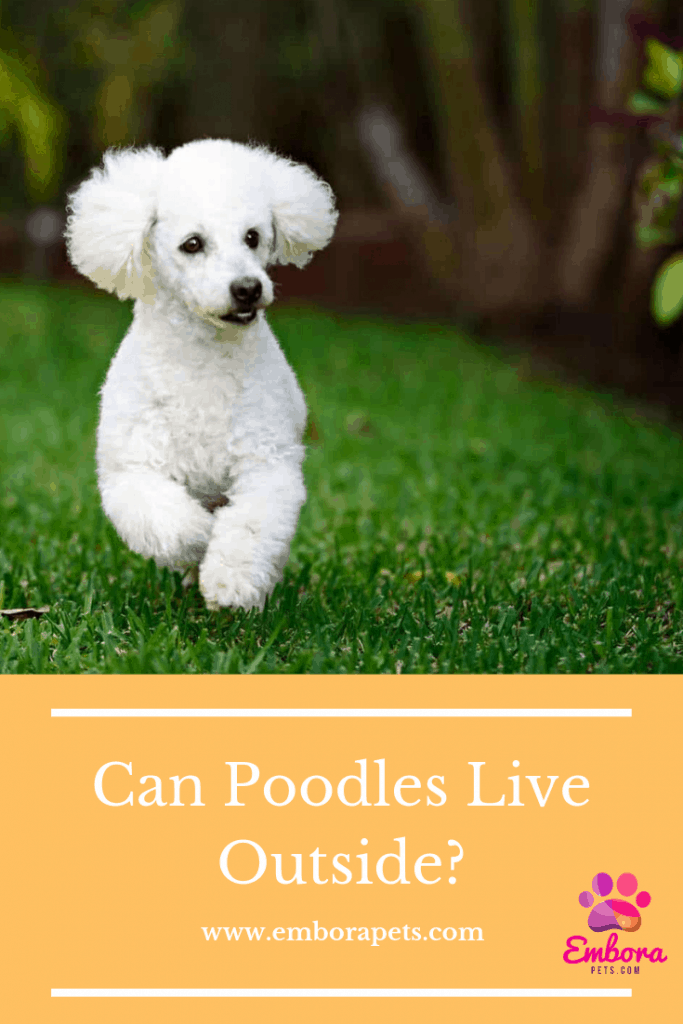Can Poodles Live Outside?
Poodles happen to be some of the most popular family dogs out there, especially for those with allergies. However, when it comes to taking care of a pet, it might seem easier to keep him or her outside. Poodles are a little bit different than other breeds, so how do they fit into this equation?
Poodles are not a breed that does well with living outside. Standard poodles may be able to live outside in mild weather places – in a yard that has a safe shelter. Having any poodle live outside is risky; he or she can develop illness or anxiety.
Although there are exceptions to every rule, it is generally spoken that poodles should not be kept outside all the time. Poodles thrive around people and isolation does not suit them.
Why Poodles Should Live Inside and Not Outside
There are a lot of dog breeds out there that do well with living outside. Unfortunately, poodles are not one of them.
This is true for a couple of reasons.
It’s not because poodles are wimpy or over-pampered. A huge reason has to do with their fur.
Well, not fur per se. Poodles don’t have the typical fur that most breeds have. A poodle coat is actually made of hair. This hair is dense, course and usually curly. This hair is good enough at keeping a poodle warm during hunting, swimming, and general exercise.
This coat of hair is not very great at keeping a poodle warm when there isn’t a lot of motion. In other words, when your poodle is not running around, this hair coat is inefficient at heating.
You probably have seen a lot of poodles with coats or sweaters on, and this is mostly why.
Nights can get cold and if your poodle is out, he or she might be shivering all night instead of sleeping.
If you want an outdoor dog, a poodle is not the go to.
Another huge reason that poodles don’t do well with living outside is that they are social animals that need a lot of human interaction. Being kept outside can be isolating.
If a poodle is left alone, outside for most of the day, he or she will not be happy, and will likely be feeling anxious. Obviously, this is not good.
If you have ever been around a poodle, you probably have noticed that they are a bit emotional. They really care about their family and being left alone will make them feel unwanted.
Being anxious, sad, or in distress can cause a poodle to scratch, cry, or bark. Your neighbors will not like the constant sound of a poodle whining and barking and you will likely be worried about the happiness of your dog.
Poodles are known to be hypoallergenic anyway, so they are usually great companions for living indoors. Most people actually adopt poodles because of the low-allergy reaction rate and low shedding rate.
Not all poodles will do horribly outside, but most will not like it one bit.
Standard Poodles Do Better Than Minis or Toys
If you do want to keep a poodle outside, make sure he or she is a standard as they are able to endure a little bit more strain than others of the breed.
There are 3 main poodle types: the standard, the miniature, and the toy poodle.
A standard poodle is 16 – 24 inches tall and weighs about 40 – 75 lbs. Miniatures are 11 – 15 inches tall and 15 – 20 lbs, and toy poodles are the smallest at about 10 inches and only 5 – 10 lbs.
As you can see, there is a huge difference in size between all of them.
The two smaller dog types do not have a lot of fat to keep them warm and are a bit more dainty than the standard poodles. Smaller dogs usually have harder times in harsh environments than larger ones.
Standard poodles will have a little bit more strength and durability, as well as body fat that can help with insulating heat and regulating body temperature.
Standard poodles may still face risks when living outside, but they do stand a better chance of thriving in this environment than toys or minis.
Risks of Living Outside
If I have not convinced you to keep your beloved poodle inside, here is more information that may be able to sway you.
Of course, you should always do what is best for your individual situation, but knowing the facts can help it so you are making an informed decision.
When It’s Hot
Here are some of the things that can happen when a poodle lives outside:
- Dehydration
- Heat Stroke
- Sunburn
- Heat Exhaustion
- Burned Paws
- Dry Skin
Some of these things are more serious than others.
Leaving your poodle outside will encourage a lot of play, which will tire him or her out in a snap when the hot sun is out.
When a dog is left outside, it is harder to monitor water intake levels. All creatures will need to increase how much water they are intaking when it’s hot. If you aren’t aware of how much your poodle is drinking or forget to put more water in the bowl, dehydration, heat exhaustion, and heat stroke could happen easily.
Your pup might also be getting water from other outdoor sources if he or she is super thirsty, and these water sources may not be safe. This could be a chlorinated pool or dirty water filled with bacteria.
Hot surfaces may burn your poodles paws.
The hair on your poodles back might not be enough to protect him or her from the sun. This is especially true when if your poodle is shaved.
Even if your poodle does not get burned, dry skin is definitely possible with all the elements at play.
When It’s Cold
If you keep your poodle outdoor during the colder weather stretches, there are some inherent risks in that as well.
- Damaged Paws
- Cracked Nose
- Dry Skin
- Hypothermia
- Dehydration
Some of the same issues that often happen in summer are found on this list as well. Dehydration can happen if the water bowl freezes. Dry skin is common in the colder months, as most people experience for themselves.
Constantly having cold weather on paws and nose does it damage as well. If you were to keep your feet in the snow or cold-hard ground, you would experience limb damage as well.

Alternatives
Instead of leaving your poodle outside all the time, consider some other alternatives that may be better for you and your furry best friend.
- Try the garage – This part of the house is a place that is usually better regulated when it comes to the temperature. Plus, your poodle can’t rip up any couch cushions in this area of the house.
- Section off a dog-proof section in your house – if you worried about your poodle wandering to parts of the house he or she shouldn’t set up a room or area as if there were a baby in the house.
- Kennel train your poodle – If you want your dog to sleep in one area and not wander around, train him or her to sleep in a kennel. This will help alleviate a lot of problems and worries.
If You Do Plan On Keeping Your Poodle Outdoors
As I said before, there are exceptions for every rule and situations that don’t fit the mold. So if you find yourself needing to keep your poodle outside and feel like you can do that safely, here are some ideas and guidelines to get you situated.
Firstly, make sure that your yard is fenced. Poodles are not known to be escape artists, but they will wander off because they are naturally curious.
If you want to keep your poodle outdoors, make sure the fence does not have holes near the bottom and that there is a gate that closes all the way. This will ensure that your pet will be there in the morning.
Secondly, the yard needs to have shade and shelter. In the summer, the shade will help keep your poodle cool and the shelter will help keep your poodle warm.
Plant a tree for some shade if you don’t already have some. Porches that have room underneath can work as well.
When it comes to a good shelter, there are actually some requirements that the government sets.
Adequate shelter for dogs, as defined by state law, means a well-built, insulated, slant-roofed dog house. The interior should be just large enough for the dog to stand and to lie down comfortably.
-poodleloverspost.com
Pick a dog house that fits this criteria.
You’ll also want to make sure that you are able to give your poodle all the food he or she will need, as well as water.
Dogs will drink more in the summer or warmer months and eat more when it starts to get colder outside. It’s a good idea to keep these things in mind if your poodle is living outdoors.
Your poodle will need attention as well. If you have your poodle live outside, make sure he or she is not alone all day. Spend lots of time bonding and reassuring your pup that you are still family. Affection will make a big difference in behavior.
The most important thing is to pay attention to your poodle’s needs. Watch for changes in appetite, behavior, or health. This will help ensure that your pup is happy and adapting well.

